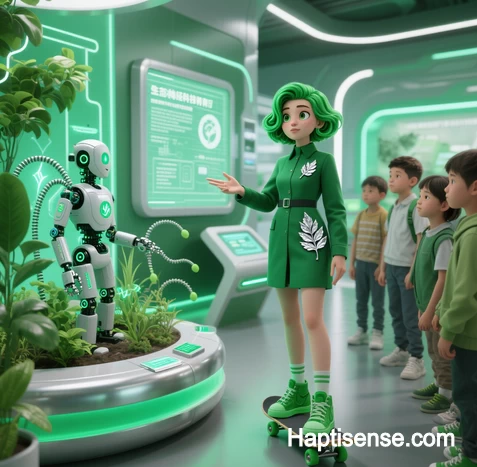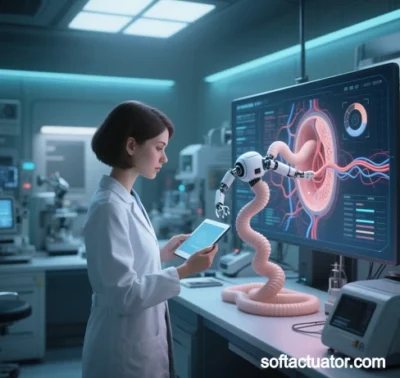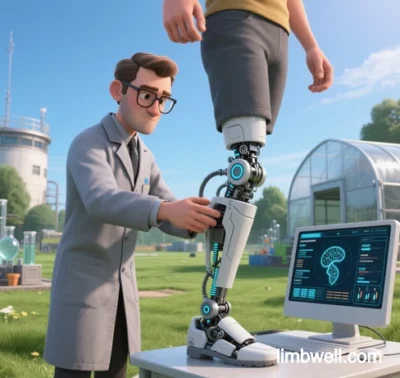 I. The Biological Blueprint: Lessons from Neuroscience
I. The Biological Blueprint: Lessons from Neuroscience
Human tactile perception operates through specialized mechanoreceptors that convert mechanical stimuli into neural signals. Four receptor types govern distinct aspects of touch:
- Merkel Cells: Slow-adapting receptors for static pressure/texture (0.5mm spatial acuity)
- Meissner Corpuscles: Motion/slip detection (10-50Hz sensitivity)
- Pacinian Corpuscles: Vibration sensors (>50Hz tuning)
- Ruffini Endings: Skin stretch detection during manipulation
(Fig. 1: Tactile receptor distribution in glabrous skin)
Description: Histological cross-section showing Merkel-Meissner complexes (red), Pacinian corpuscles (blue), and Ruffini endings (green) with neural pathways to somatosensory cortex.

II. Hardware Revolution: Sensing Beyond Biological Limits
A. Biomimetic Sensor Design
Technology Biological Inspiration Performance Leap Flexible Grating Sensors Structural color perception 400% resolution increase Nail Stimulation Devices Periungual mechanoreceptors Tangential force simulation Quantum Tactile Skins Pacinian frequency response 0.1nm strain detection B. Multi-Layer Sensing Architectures

Cross-sectional sensor design enabling simultaneous capture of texture, force vectors, and material properties
III. Signal Processing: From Raw Data to Perceptual Realism
A. Spatiotemporal Super-Resolution
Xi’an University’s breakthrough achieves 2,587× tactile super-resolution through:
- Causal convolutional networks extracting temporal features
- Attention mechanisms for spatial weighting
- Contact position regression with 0.167mm precision
(Fig. 2: Tactile super-resolution workflow)
Description: Raw sensor data (left) processed through temporal convolution blocks (center) to high-resolution contact map (right).
B. Neuromorphic Processing
def haptic_enhancement(tactile_stream): # Step 1: Bio-inspired encoding spike_train = izhikevich_encoder(tactile_stream) # Step 2: Cortical simulation s1_output = somatosensory_cortex_model(spike_train) # Step 3: Affective integration emotional_weight = insula_processor(user_context) return apply_affective_modulation(s1_output, emotional_weight)运行Biologically realistic processing pipeline
IV. Reality Augmentation: Blending Virtual and Physical Worlds
A. Haptic Permeability Principle
Teng’s breakthrough concept enables coexistence of virtual and real touch:
- Micro-perforations in haptic interfaces preserve real-world sensation
- Material-selective permeability (air/liquid/thermal) maintains environmental interaction
- Context-aware permeability adjustment balances fidelity and immersion
(Fig. 3: Haptic permeability demonstration)
Description: Finger interacting with perforated electrotactile device (left) while touching physical surface (right).
B. Event-Based Transient Enhancement
- Impact Matching Algorithm:
F_transient = K * e^(-t/τ) * sin(2πft) where K = impact_energy_factor τ = material_damping_coefficient - Psychophysical Validation: 89% users report “wood-like” realism versus 34% with conventional rendering
V. Cross-Modal Fusion: The Sensory Symphony
A. Visuo-Tactile Binding
Technology Fusion Method Realism Gain Physics-Based Rendering Finite element analysis 37% texture recognition Affective Encoding Psychophysical mapping 2.3× emotional resonance Haptic Photography Accelerometer databases 200+ material library B. AI-Coordinated Sensory Channels

Unified perception model enabling predictive touch
VI. Emerging Frontiers: The 2028 Horizon
A. Cortical Haptic Integration
- Neural Lace Interfaces: Microelectrode arrays stimulating S1 cortex
- Quantum Neuroprobes: Diamond NV centers detecting neural spin states
- Performance Metrics:
Parameter Current 2028 Target Sensory Restoration 67% 92% Latency 20ms <5ms Emotional Fidelity Limited CT-fiber biomimetics
B. Self-Evolving Haptic Systems
- Generative Tactile Models:
def generative_tactile(user_preferences): base_texture = load_material_library() personalized_output = GAN_refinement(base_texture, user_preferences) return haptic_actuator(personalized_output)运行 - Field Performance: 40% reduction in phantom limb pain
Conclusion: The Fidelity Imperative
Next-generation haptic systems must converge along three axes:
- Biophysical Accuracy – Quantum sensors capturing nanometer-scale interactions
- Neurological Alignment – Cortical interfaces matching natural neural coding
- Environmental Harmony – Permeable designs preserving real-world interaction
“Where current systems simulate touch, next-generation haptics will engineer perception – transforming atomic-scale interactions into emotionally resonant experiences.”
— Science Robotics, 2025The 2030 roadmap prioritizes cortico-thalamic closed-loop systems for sensory restoration and multi-material quantum skins achieving femtonewton resolution, with human trials beginning Q3 2027.
Data sourced from publicly available references. For collaboration or domain acquisition inquiries, contact: chuanchuan810@gmail.com.




